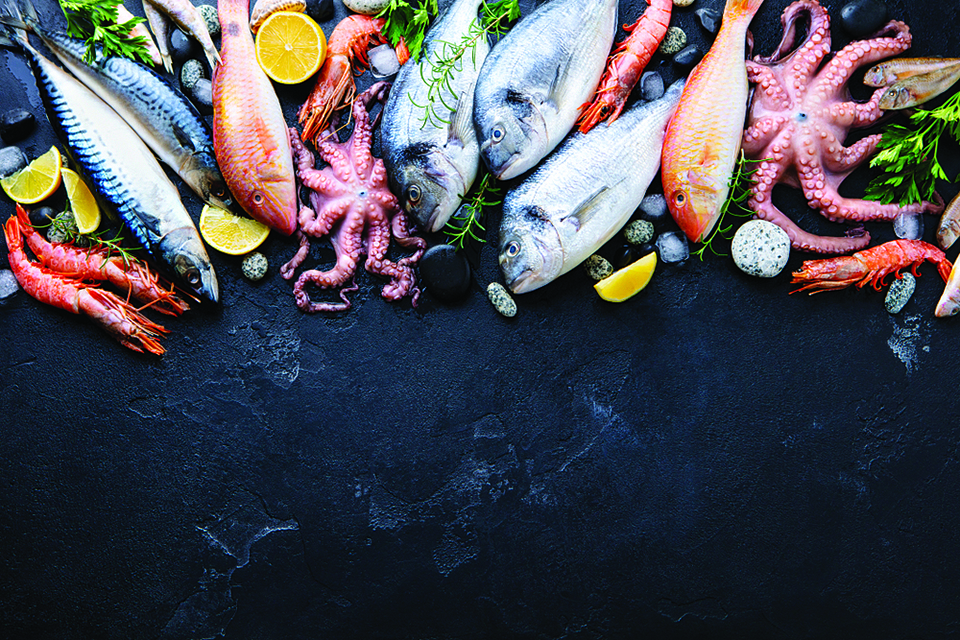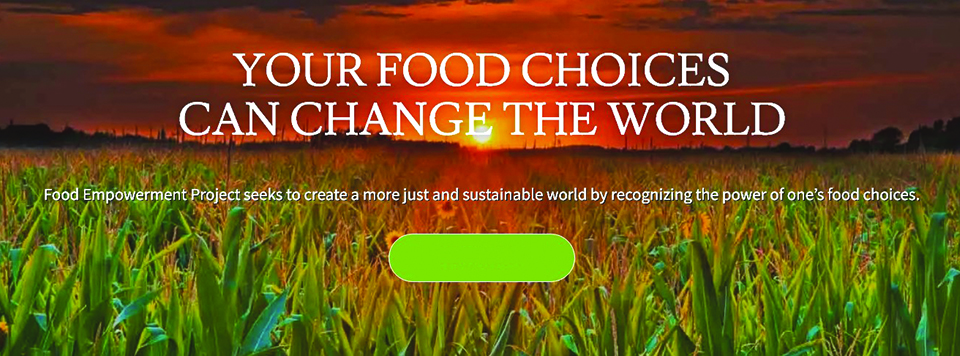When we think of Fish, the first thing that comes to mind is food. In 2016, the Philippine Statistics Authority said that next to rice, the second staple food for Filipinos is Fish. And that on average, a Filipino consumes about 98.6 grams of Fish and Fish products daily. According to the Food and Agriculture Organization of the United Nations, “Global Fish production is estimated to have reached about 179 million tonnes in 2018. 156 million tonnes ended up on our plates.”
To put that in perspective, 179 million tons is equivalent to the weight of the Eiffel tower every 29 minutes. One need not be a rocket scientist to understand that this is unsustainable.
By now, a lot of us are already aware of overfishing, not to mention other human activities that pose a threat to the oceans (more on that later). In a steadily growing human population where demand is only expected to rise, we are steering ourselves closer and closer to dangerous waters.

FOOD WITH A FACE
What we fail to acknowledge when we think of Fish is that these animals are highly evolved, highly complex creatures. Perhaps it is because Fishes look the least like us compared to the other animals we consume that, somehow, they don’t elicit much empathy in us, making them the most abused animals on earth.
We may also think that because the oceans are vast, resources would be infinite. This couldn’t be farther from the truth as there are already studies out there that tell us otherwise. Which begs the question, what happens when the last Fish dies?
UNDER THE SEA
In the 2013 publication of World Ocean Review titled The Future of Fish – The Fisheries of the Future, they said, “Fish make a major contribution to their ecosystem: providing essential nutrients that support the whole ecosystem. Simply put, Fish are excellent recyclers of the nutrients that algae and other bottom-level species need to survive that in turn support the remainder of the ecosystem. The importance of this function suggests that overfishing can be highly detrimental to the proper functioning of the whole ecosystem.”
The bottom-level species referred to above are phytoplankton, which also happen to be one of the most important organisms in the ocean and are the foundation of the oceanic food chain. They act as primary producers, feeding all life under the sea from minute zooplankton to massive whales.
Not only are phytoplankton a source of sustenance for aquatic life. According to a 2015 article from earthsky.org How Much Do Oceans Add To The World’s Oxygen?, “scientists estimate that between 50 to 85 percent of the oxygen in the Earth’s atmosphere” is produced by these free-floating microscopic organisms.

FISHLESS OCEANS?
In 2006, Worm et al in their research article Impacts of Biodiversity Loss on Ocean Ecosystem Services, they predicted that oceans will be fishless by 2048. Although this claim has been refuted by other studies, we shouldn’t take it lightly. If anything, we should take it as a hint not to further damage the oceans.
In an interview with Green Queen HK, Watson said, “The predictions differ, with some saying that the ocean Fish stocks will be diminished by 88%, which is still pretty close to 100%. It doesn’t really matter whether it’s 2048 or 2078. The point is, it’s going to crash and there is no sustainable commercial fishing anywhere in the world.”
ECONOMICS OF EXTINCTION
Despite the important roles of Fishes and plankton in the ocean, rampant exploitation continues. Sea Shepherd Founder Captain Paul Watson said in his 2015 commentary that since the 1950s, plankton population have already been diminished by 40% and yet plankton are still being extracted from the oceans in millions of tons only to be converted into animal feed.
“The reality is that there are simply not enough Fish in the sea to continue to feed an ever-expanding human population. It is a simple concept to understand – more humans eating Fish, directly or indirectly (i.e. fishmeal), contributes to further diminishment of Fish,” Watson expressed.
He further explained that, “This diminishment means diminished supplies, resulting in increased subsidization to provide more efficient technology to extract even more of the diminishing supplies. Unless the subsidies are cut, this diminishment will result in collapse. I call this the ‘economics of extinction.’”

OVERFISHING AND OTHER ISSUES
THE MARINE CONSERVATION INSTITUTE LISTED SEVEN* OF THE MOST PRESSING ISSUES THAT FISHES ARE FACING TODAY.
- OVERFISHING
By overfishing, we are destroying entire ecosystems and the food chains which are essential to keep them thriving.
Not only is overfishing wiping entire species out, but it’s also having a direct impact on other species in the food web. Some of the methods used for fishing are destructive in themselves, such as bottom trawling, which destroys habitats and captures many Fish which are not even wanted, only to be tossed aside.
2. OCEAN ACIDIFICATION
The ocean absorbs up to one third of the carbon dioxide that we emit worldwide. This helps keep us cooler; unfortunately, it makes the ocean more acidic. This has a direct impact on calcifying organisms, such as Corals, oysters, sea urchins, clams, and many others.
3. GHOST FISHING
This occurs when old fishing equipment is lost (or tossed), and continues to catch or entangle Fish and other marine life. This can also trigger a chain of injuries or deaths when smaller animals get caught in abandoned nets, and larger predators in search of their prey find themselves caught in the nets, too.
4. COMMERCIAL WHALING
Blue whales are listed as endangered on the IUCN list and there is less than one percent of the original population in the Antarctic now. West Pacific grey whales are the most endangered, with only more than 100 left in the oceans.
Despite strict regulations on whaling, there are still a number of countries, such as Japan and Iceland, which use loopholes to continue commercial whaling.
5. FISH FRAMING
As more people inhabit the earth, there is more demand for food, and one response is to grow as many Fish as quickly as possible, regardless of the negatives. Unfortunately, chemical pollution can easily occur, since Fish farms often rely heavily on medications and are a source of excessive nutrients from left over artificial Fish food and excrement. This can have destructive effects on natural habitats in the sea, as well as lead to accidental release of farmed Fish capable of destroying native stocks and passing on diseases.
6. PLASTIC
Between 1.15 and 2.41 million tons of plastic enter the ocean every single year. The Great Pacific Garbage Patch, which is a collection of rubbish in the Pacific Ocean, is now three times the size of France. Animals can get tangled in the huge amount of plastic which litter the ocean, and the plastic smothers and destroys Coral and sponges.
Plastic bags are also often mistaken for food by sea turtles, and they either become trapped or eat the bag, clogging their digestive system.
Plastic continuously breaks down, resulting in little pieces of “micro-plastic” that are consumed by a variety of marine life, including several species that humans like to catch and eat.
7. HABITAT DESTRUCTION
Global warming contributes to the decline of many Coral reefs. It has resulted in Coral bleaching, a phenomenon whereby heat-stressed Corals expel their symbiotic algae. These algae are necessary to keep the Coral alive.
Other things contributing to habitat destruction are coastal development, pollution (e.g., runoff or oil spills), clearing mangrove forests for shrimp production, and deep-sea trawling.
FISH OFF THE HOOK
Numerous projects, experts, and organizations have proposed solutions to help Fish populations recover. Here are some of them.

SEASPIRACY
According to the documentary titled Seaspiracy, here are a few things one can do.
• Shift to a plant-based diet
• Enforce no-catch marine reserves protecting 30% of our oceans by 2030
• End fishing subsidies
SEA SHEPHERD
Sea Shepherd’s Watson said, “The whales are the primary species that fertilize the phytoplankton . . . In order to restore phytoplankton populations, we need to restore whale populations and we need to abolish the industrialized exploitation of bio-diversity in the ocean. We also need to have governments end all subsidization of commercial fishing operations.”
Sea Shepherd proposed the following.

• An end to the ecologically destructive greenhouse-gas-producing animal slaughter industry that emits more greenhouse gases annually than the entire transportation industry
• A global moratorium on all industrialized fishing operations
• An end to the killing of whales by anyone, anywhere for any reason
HUMAN RIGHTS ISSUES
Aside from the environmental issues that are rife in the fishing industry, there’s also the case of human rights abuses.
A 2021 editorial from Human Rights at Sea said, “The international community and global public unapologetically need to hear more about the murders, rapes, slavery, trafficking, forced labor, debt bondage, abandonment and numerous other human and labour rights abuses occurring every day at sea.” International exposés have also uncovered abuses of Thai, Taiwanese, and New Zealand fleets, according to the editorial.
Center for Advanced Defense Studies, a US-based nonprofit specializing in transnational security, also reported that Taiwanese and Chinese fishing fleets have the highest rate of forced labor in the world, with most of their migrant workers coming from Vietnam, Philippines, and Indonesia.
Many human rights abuses at sea are happening in different parts of the world as we speak, with the vulnerable and marginalized at most risk. And it is high time that their struggles are given attention, too.

FOOD EMPOWERMENT PROJECT
According to Food Empowerment Project, “The best and easiest way to make a difference for the ocean and its inhabitants is to refrain from eating Fish or any other ‘seafood’ and follow a vegan diet. Also share with your friends and family how commercial fishing and Fish farming harm animals and the ocean, and encourage them to eat plant-based foods instead.”
SINK OR SWIM
There’s no sugarcoating it: With all these issues caused by consumer demand and corporate greed, we are contributing to the “economics of extinction.” Which brings us back to the question: What happens when the last Fish dies? As Capt. Watson puts it, “If the Fish disappear, the ocean’s going to die. If the oceans die, we all die.”
Frightening, right? But maybe it’s necessary to feel fear in order for us to do something about it. Whether we are compelled by fear or a sense of duty to protect our environment, we need to act now. While we may not be able to completely reverse all the damage that has been done, we still have a chance to prevent it from getting even worse.
As consumers, we have a responsibility to be as conscientious as possible. Likewise, corporations need to do their part and also be held accountable for their destructive practices. Continuing to put profit over lives shouldn’t be a part of our future anymore.

In the context of the Philippines, experts and the government need to work with our farmers and let them take the lead in their own communities. Alternatives and other sources of livelihood for farmers should be provided, and sufficient education in plant-based nutrition and plant-based technology should be implemented.
MORAL PERSPECTIVE
More than being advocates for the environment, perhaps we should also start thinking about giving moral consideration to Fishes and all other animal species. Even if we don’t benefit from their existence, we should value and respect their lives as our fellow earthlings.
Fishes don’t need to prove their worth to us for them to live. They should be able to swim free in their water home without human-interference, simply because it is their earth-given right.






